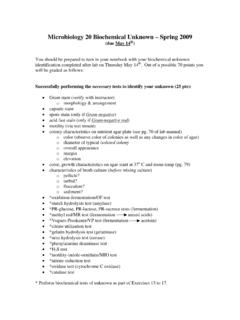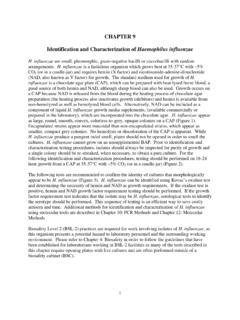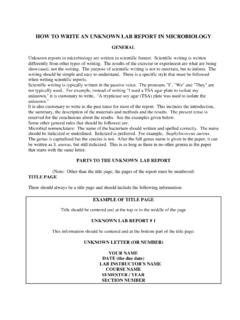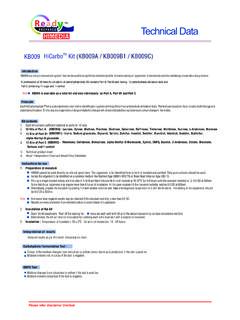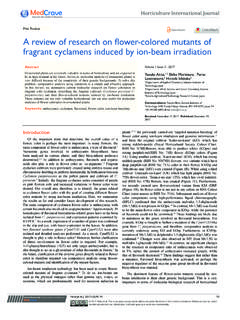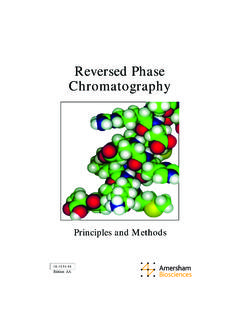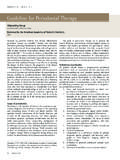Transcription of Poisoning Severity Score - WHO
1 Poisoning Severity Score (PSS). IPCS/EAPCCT. A standardized scale for grading the Severity of Poisoning allows qualitative evaluation of morbidity caused by Poisoning , better identification of real risks and comparability of data. The PSS has been published Instructions The PSS is a classification scheme for cases of Poisoning in adults and children. This scheme should be used for the classification of acute poisonings regardless of the type and number of agents involved. However, modified schemes may eventually be required for certain poisonings and this scheme may then serve as a model. The PSS should take into account the overall clinical course and be applied according to the most severe symptomatology (including both subjective symptoms and objective signs).
2 Therefore it is normally a retrospective process, requiring follow-up of cases. If the grading is undertaken at any other time ( on admission) this must be clearly stated when the data are presented. The use of the Score is simple. The occurrence of a particular symptom is checked against the chart and the Severity grading assigned to a case is determined by the most severe symptom(s). or sign(s) observed. Severity grading should take into account only the observed clinical symptoms and signs and it should not estimate risks or hazards on the basis of parameters such as amounts ingested or serum/plasma concentrations. The signs and symptoms given in the scheme for each grade serve as examples to assist in grading Severity . Treatment measures employed are not graded themselves, but the type of symptomatic and/or supportive treatment applied ( assisted ventilation, inotropic support, haemodialysis for renal failure) may indirectly help in the evaluation of Severity .
3 However, preventive use of antidotes should not influence the grading, but should instead be mentioned when the data are presented. Although the scheme is, in principle, intended for grading of acute stages of Poisoning , if disabling sequelae and disfigurement occur, they would justify a high Severity grade and should be commented on when the data are presented. If a patient's past medical history is considered to influence the Severity of Poisoning this should also be commented on. Severe cases resulting in death are graded separately in the Score to allow a more accurate presentation of data (although it is understood that death is not a grade of Severity but an outcome). Severity Grades NONE (0): No symptoms or signs related to Poisoning MINOR (1): Mild, transient and spontaneously resolving symptoms MODERATE (2): Pronounced or prolonged symptoms SEVERE (3): Severe or life-threatening symptoms FATAL (4): Death 1.
4 Persson H, Sj berg G, Haines J, Pronczuk de Garbino J. Poisoning Severity Score : Grading of acute Poisoning . J Toxicology - Clinical Toxicology (1998) 36:205-13. Page 1 of 4. ORGAN NONE MINOR MODERATE SEVERE FATAL. 0 1 2 3 4. No Mild, transient and spontaneously Pronounced or prolonged symptoms or Severe or life-threatening symptoms or Death symptoms resolving symptoms or signs signs signs or signs GI-tract Vomiting, diarrhoea, pain Pronounced or prolonged vomiting, Massive haemorrhage, perforation diarrhoea, pain, ileus Irritation, 1st degree burns, minimal 1st degree burns of critical localization or More widespread 2nd and 3rd degree burns nd rd ulcerations in the mouth 2 and 3 degree burns in restricted areas Severe dysphagia Dysphagia Endoscopy: erythema, oedema Endoscopy: ulcerative transmucosal Endoscopy.
5 Ulcerative transmural lesions, lesions circumferential lesions, perforation Respiratory Irritation, coughing, breathlessness, Prolonged coughing, bronchospasm, Manifest respiratory insufficiency (due to system mild dyspnoea, mild bronchospasm dyspnoea, stridor, hypoxemia requiring severe bronchospasm, airway extra oxygen obstruction, glottal oedema, pulmonary oedema, ARDS, pneumonitis, pneumonia, pneumothorax). Chest X-ray: abnormal with minor or Chest X-ray: abnormal with moderate Chest X-ray: abnormal with severe no symptoms symptoms symptoms Nervous Drowsiness, vertigo, tinnitus, ataxia Unconsciousness with appropriate Deep coma with inappropriate response to system response to pain pain or unresponsive to pain Brief apnoea, bradypnoea Respiratory depression with insufficiency Restlessness Confusion, agitation, hallucinations, Extreme agitation delirium Frequent, generalized seizures, status Infrequent, generalized or local seizures epilepticus.
6 Opisthotonus Mild extrapyramidal symptoms Pronounced extrapyramidal symptoms Mild cholinergic/anticholinergic symptoms Pronounced cholinergic/anticholinergic symptoms Paraesthesia Generalized paralysis or paralysis Localized paralysis not affecting vital affecting vital functions functions Mild visual or auditory disturbances Blindness, deafness Visual and auditory disturbances Page 2 of 4. ORGAN NONE MINOR MODERATE SEVERE FATAL. 0 1 2 3 4. No Mild, transient and spontaneously Pronounced or prolonged symptoms or Severe or life-threatening symptoms or Death symptoms resolving symptoms or signs signs signs or signs Cardio- Sinus bradycardia (HR ~40-50 in adults, Severe sinus bradycardia (HR ~<40 in vascular 60-80 in infants and children, 80-90 in adults, <60 in infants and children, <80 in system neonates) neonates).
7 Sinus tachycardia (HR ~140-180 in Severe sinus tachycardia (HR ~>180 in adults, 160-190 in infants and children, adults, >190 in infants and children, >200. 160-200 in neonates) in neonates). Isolated extrasystoles Frequent extrasystoles, atrial fibrillation/flutter, AV-block I-II, prolonged Life-threatening ventricular dysrythmias, QRS and QTc-time, repolarization AV block III, asystole abnormalities Myocardial ischaemia Myocardial infarction Mild and transient hypo/hypertension More pronounced hypo/hypertension Shock, hypertensive crisis Metabolic Mild acid-base disturbances More pronounced acid-base Severe acid-base disturbances balance (HCO3 ~15-20 or 30-40 mmol/l; disturbances (HCO3 ~10-14 or >40 (HCO3 ~<10 mmol/l; pH ~< or > ). pH~ or ) mmol/l; pH ~ or ).
8 Severe electrolyte and fluid disturbances Mild electrolyte and fluid More pronounced electrolyte and fluid (K+ < or > mmol/l). disturbances (K+ or disturbances (K+ or mmol/l) mmol/l) Severe hypoglycaemia (~<30 mg/dl or mmol/l in adults). Mild hypoglycaemia (~50-70 mg/dl More pronounced hypoglycaemia (~30- or mmol/l in adults) 50 mg/dl or mmol/l in adults) Dangerous hypo- or hyperthermia Hyperthermia of short duration Hyperthermia of longer duration Liver Minimal rise in serum enzymes Rise in serum enzymes (ASAT, ALAT Rise in serum enzymes (~>50 x normal) or (ASAT, ALAT ~2-5 x normal) ~5-50 x normal) but no diagnostic biochemical ( ammonia, clotting biochemical ( ammonia, clotting factors) or clinical evidence of liver failure factors) or clinical evidence of liver dysfunction Kidney Minimal proteinuria/haematuria Massive proteinuria/haematuria Renal dysfunction ( oliguria, polyuria, Renal failure ( anuria, serum creatinine serum creatinine of ~200-500 mol/l))
9 Of >500 mol/l). Page 3 of 4. ORGAN NONE MINOR MODERATE SEVERE FATAL. 0 1 2 3 4. No Mild, transient and spontaneously Pronounced or prolonged symptoms or Severe or life-threatening symptoms or Death symptoms resolving symptoms or signs signs signs or signs Blood Mild haemolysis Haemolysis Massive haemolysis Mild methaemoglobinemia More pronounced methaemoglobinemia Severe methaemoglobinemia (metHb ~10-30%) (metHb ~30-50%) (metHb >50%). Coagulation disturbances without Coagulation disturbances with bleeding bleeding Severe anaemia, leukopenia, Anaemia, leukopenia, thrombocytopenia thrombocytopenia Muscular Mild pain, tenderness Pain, rigidity, cramping and fasciculation Intense pain, extreme rigidity, extensive system cramping and fasciculation CPK ~250-1,500 iu/l Rhabdomyolysis, CPK ~1,500-10,000 iu/l Rhabdomyolysis with complications, CPK.
10 ~>10,000 iu/l Compartment syndrome Local Irritation, 1st degree burns 2nd degree burns in 10-50% of body 2nd degree burns in >50% of body surface effects on (reddening) or 2nd degree burns in surface (children: 10-30%) or 3rd degree (children: >30%) or 3rd degree burns in skin <10% of body surface area burns in <2% of body surface area >2% of body surface area Local Irritation, redness, lacrimation, mild Intense irritation, corneal abrasion effects on palpebral oedema eye Minor (punctate) corneal ulcers Corneal ulcers (other than punctate), perforation Permanent damage Local Local swelling, itching Swelling involving the whole extremity, Swelling involving the whole extremity and effects from local necrosis significant parts of adjacent area, more bites extensive necrosis and stings Critical localization of swelling threatening the airways Mild pain Moderate pain Extreme pain Page 4 of 4.










